I’ve played with filters over the years but gather they’ve become far more popular in a social media world.

I’ve played with filters over the years but gather they’ve become far more popular in a social media world.
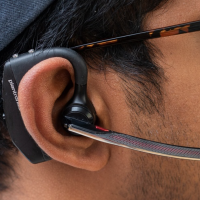 Seems like only yesterday wearing a Blue Tooth earbud/mic made you the subject of derision. A techno-hipster intent on impressing everyone with his hands-free phone calls.
Seems like only yesterday wearing a Blue Tooth earbud/mic made you the subject of derision. A techno-hipster intent on impressing everyone with his hands-free phone calls.
Fast-forward to the Apple AirPods, which also got you some snickers. A lot for snickers. But it turns out AirPods work pretty well and I started seeing them everywhere. The FedEx guy. The crew chief that oversaw our new roof. The guy that mows our yard (yeah, yeah).
 The plague hits and Zoom becomes a generic term (“I was zooming all day”). And those TV “at home” interviews? Lots of AirPods. So many that when I see someone wear a big old set of cans I think, poor dweeb.
The plague hits and Zoom becomes a generic term (“I was zooming all day”). And those TV “at home” interviews? Lots of AirPods. So many that when I see someone wear a big old set of cans I think, poor dweeb.
Like these two guys being interviewed by Bill Maher. I know, I know… superior audio quality!
The battery on my iPhone XS wasn’t holding a charge (I’ve had it a couple of years) so I popped for an iPhone 11 and it arrived yesterday. It feels strange to all them phones given all the other things we do with them. Mine is a camera first and somewhere near the bottom of the list is PHONE.
Barb has had one for a while and the photos she has taken are beautiful so I was eager to play with this feature. My friend George spoke glowingly of the photos he had gotten with the latest iPhone’s Night Mode. If I understand correctly, the phone takes three photos and magically combines them to come up with the best image. The photos below were just “point and shoot” on my part. I’ll probably never get around to researching and fulling understanding (or using) the many features of my new camera/phone.
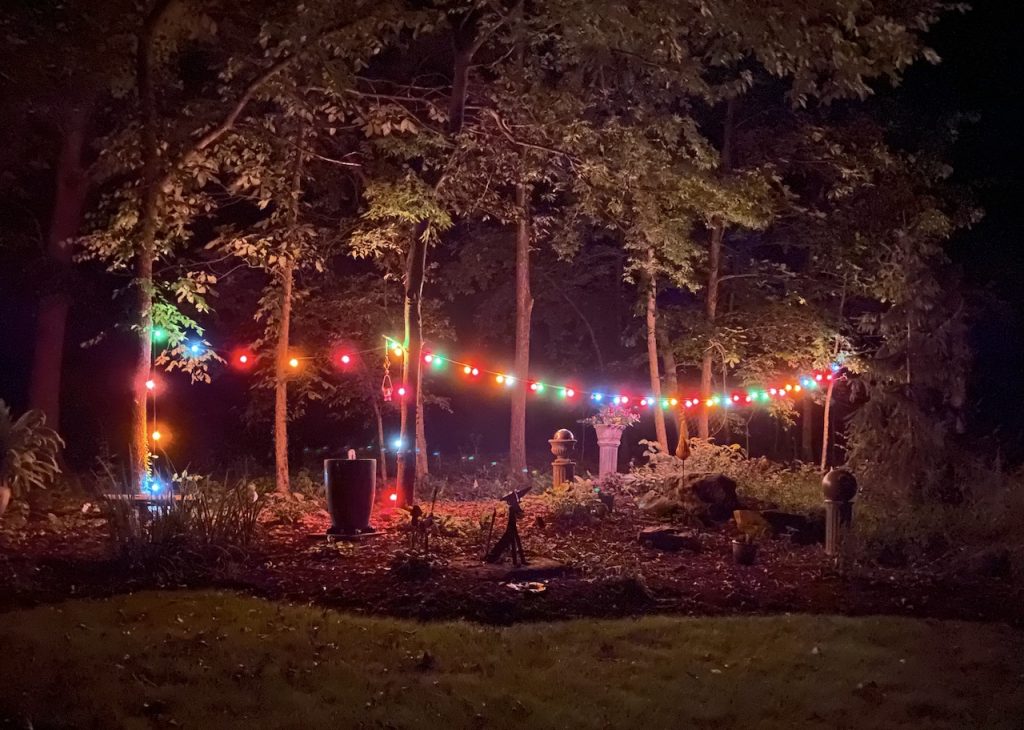

First photo above using this new feature, the second photo not.
I was in San Francisco attending MacWorld (first and last time) when Steve Jobs introduced the iPhone. I didn’t understand or appreciate what a big deal it would be. I didn’t get one that first year but broke down a year later. And have had one ever since.
Here are a couple of more photos from yesterday.
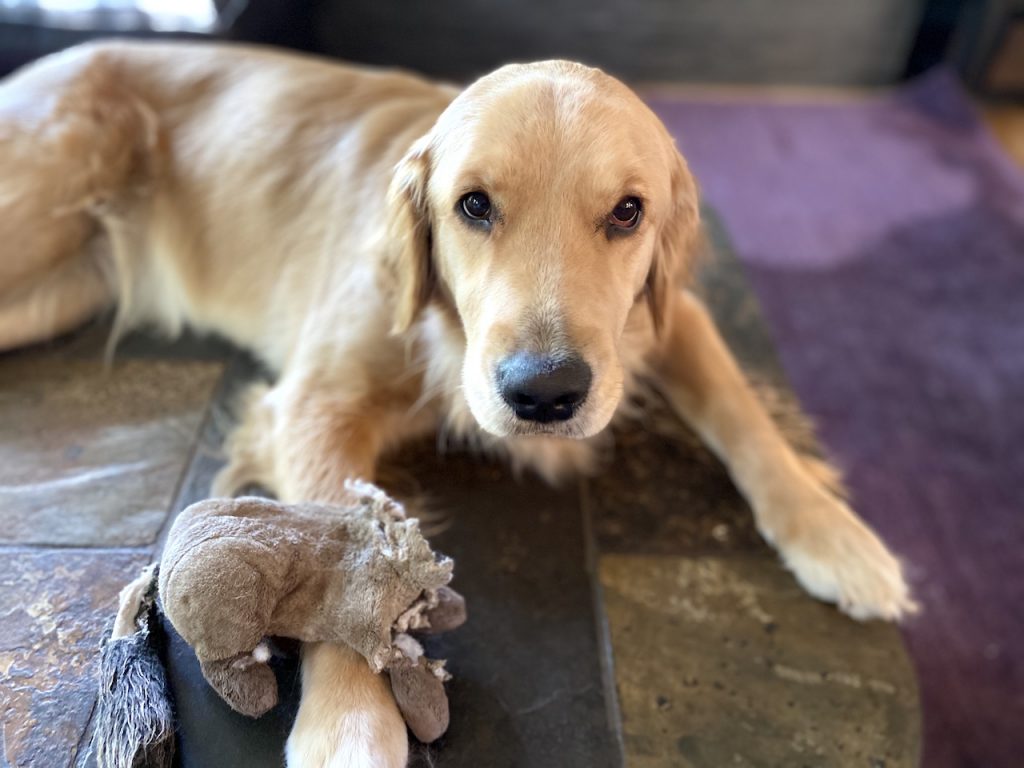

I keep telling myself the iPhone I have is good enough. More than good enough, and I don’t need the latest and greatest. But look at those photos!
Before I tell you about the Fiskars Pruning Stik®, a little about me and tools. I’m not really a tool guy. I’ve got a hammer and pliers and some wrenches and stuff but you’ll not find me trying to fix the washing machine or changing the oil in my truck. But I have a fondness for outdoor power tools.
I’ve had a couple of chainsaws, a weed trimmer and last year I added a pole saw (all Stihl products). I can’t explain it but I enjoy going down into our woods and clearing brush and cutting cedar trees. Not sure how many more years I’ll be able to (safely) do this but for now, it’s something I enjoy.
The Stihl pole saw allows me to trim limbs that you couldn’t get to with the big chainsaw. But it weighs about 15 pounds and gets heavy fast. And we kept seeing dead limbs that were just out of reach of the pole saw.
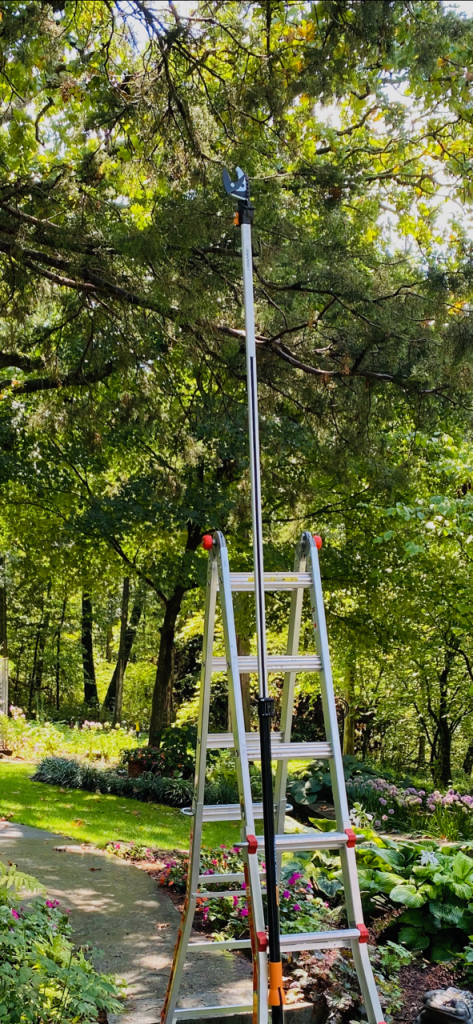
Barb started researching “extendable tree pruners” and purchased the Pruning Stik® from Fiskars. I think it was about a hundred bucks quickly proved it’s worth. Extends to twelve feet and light enough you can safely stand on a ladder for a few extra feet. We’ve been going nuts with the thing. You wouldn’t think you could exert enough force (at the end of a long pole) to cut a good size limb, but it works like a charm.
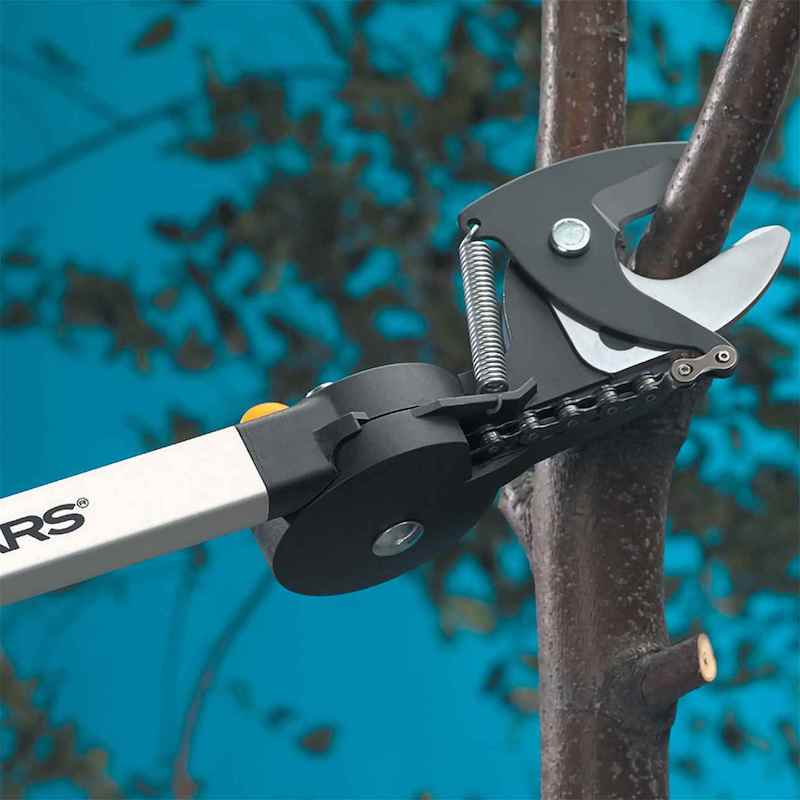 I’ll still fire up the pole saw for the bigger jobs but the Pruning Stik is a must-have tool if you have a lot of trees.
I’ll still fire up the pole saw for the bigger jobs but the Pruning Stik is a must-have tool if you have a lot of trees.
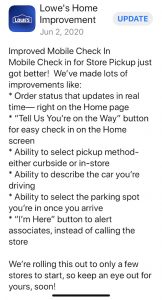 I’m starting to see more and more businesses, mostly national chains for now, updating their mobile apps to make it easier to be safe when making purchases. Most local businesses (in Jefferson City, MO) do not have apps so the process is more cumbersome. Ordering from our favorite Chinese restaurant means calling and telling them we’d like to place an order, pay for it over the phone with a credit card, call them when we arrive, and have them bring it out to our car. “Just come inside and pay!” Nooo, we don’t want to come inside. Will you bring it out to our car? After checking with someone in charge, they say okay. Not a big deal but a process that could be improved with an app.
I’m starting to see more and more businesses, mostly national chains for now, updating their mobile apps to make it easier to be safe when making purchases. Most local businesses (in Jefferson City, MO) do not have apps so the process is more cumbersome. Ordering from our favorite Chinese restaurant means calling and telling them we’d like to place an order, pay for it over the phone with a credit card, call them when we arrive, and have them bring it out to our car. “Just come inside and pay!” Nooo, we don’t want to come inside. Will you bring it out to our car? After checking with someone in charge, they say okay. Not a big deal but a process that could be improved with an app.
Online grocery shopping has been around for a while but I haven’t paid much attention. I have lots of time and tend to impulse-shop. But as I look for ways to avoid unnecessary exposure to crowds, I decided to give it a try.
Gerbes Supermarket (a Kroger brand) is about ten minutes from my house. You can shop via desktop browser or from a mobile app and they’ll deliver ($10) or you can schedule a time to pick up your order ($5). Looks like they’ll ship an order but I’m not sure that’s available locally.
I downloaded the iOS app and started shopping. Not the greatest UI I’ve ever seen but not bad. I found it a little confusing when updating my order but that might have been my lack of familiarity. I chose a pick-up window and they texted me reminders as well as notifications when one of the products I selected was out of stock.
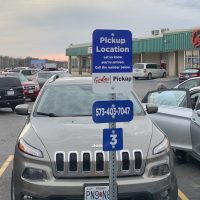 Our local store has three pick-up “stalls” (parking slots) with a phone number to let them know you’re waiting. A nice lady came out with my groceries and a list showing an item that was unavailable as well as a substitution (If I didn’t like it they’d take it back and adjust my credit card charge).
Our local store has three pick-up “stalls” (parking slots) with a phone number to let them know you’re waiting. A nice lady came out with my groceries and a list showing an item that was unavailable as well as a substitution (If I didn’t like it they’d take it back and adjust my credit card charge).
This seemed like a pretty good deal for five bucks. There will be times when I want to roam the aisles but for now, I’ll avoid the masses.
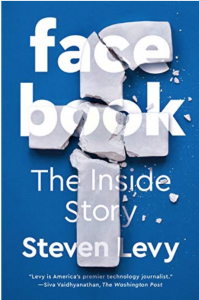 I’m at a loss for what to say about Steven Levy’s book, Facebook: The Inside Story. At 500 pages it’s a deep dive into the history of Facebook (the startup and all that’s happened since). The excerpts below are just a few of the things that caught my eye. It would be a mistake to judge the book (or Mark Zuckerberg) based on the passages I underlined.
I’m at a loss for what to say about Steven Levy’s book, Facebook: The Inside Story. At 500 pages it’s a deep dive into the history of Facebook (the startup and all that’s happened since). The excerpts below are just a few of the things that caught my eye. It would be a mistake to judge the book (or Mark Zuckerberg) based on the passages I underlined.
Soley by analyzing Likes, they successfully determined whether someone was straight or gay 88 percent of the time. In nineteen out of twenty cases, they could figure out whether one was white or African American. And they were 85 percent correct in guessing one’s political party. Even by clicking innocuous subjects, people were stripping themselves naked. […] In subsequent months,Kosinski and Stillwell would improve their prediction methods and publish a paper that claimed that using Likes alone, a researcher could know someone better than the people who worked with, grew up with, or even married that person. “Computer models need 10, 70, 150, and 300 Likes, respectively, to outperform an average work colleague, cohabitant or friend, family member, and spouse.”
A 2012 study found that Facebook was mentioned in a third of divorces.
It was a natural evolution to put (content moderators) in factories. They became the equivalent of digital janitors, cleaning up the News Feed like the shadow workforce that comes at night and sweeps the floors when the truly valued employees are home sleeping. Not a nice picture. And this kind of cleaning could be harrowing, with daily exposure to rapes, illegal surgery, and endless images of genitals.
Between January and March 2019, (Facebook) blocked 2 billion attempts to open fake accounts — almost as many as actual users on the system. […] The company concedes that around 5 percent of active accounts are fake. That’s well over 100 million.
It’s left to the 15,000 or so content moderators to actually determine what stuff crosses the line, forty seconds at a time. In Phoenix (site of one of the moderator “factories”) I asked the moderators I was interviewing whether they felt that artificial intelligence could ever do their jobs. The room burst out in laughter.
A computer-science teacher at one of the big AI schools told me that Facebook used to be the top employment choice. Now he guesses that about 30 percent of his students won’t consider it, for moral reasons.
“We’ve actually built an AI that’s more powerful than the human mind and we hid it from all of society by calling it something else,” Harris says. “By calling it the Facebook News Feed, no one noticed that we’d actually built an AI that’s completely run loose and out of control.” Harris says that using the News Feed is like fighting an unbeatable computer chess player—it knows your weaknesses and beats you every time.” — Tristan Harris (former Google interface engineer)
A few take-aways:
The book has left me a bit shaken. I always considered religion — some religion — the greatest danger to humanity. Facebook seems a greater threat.
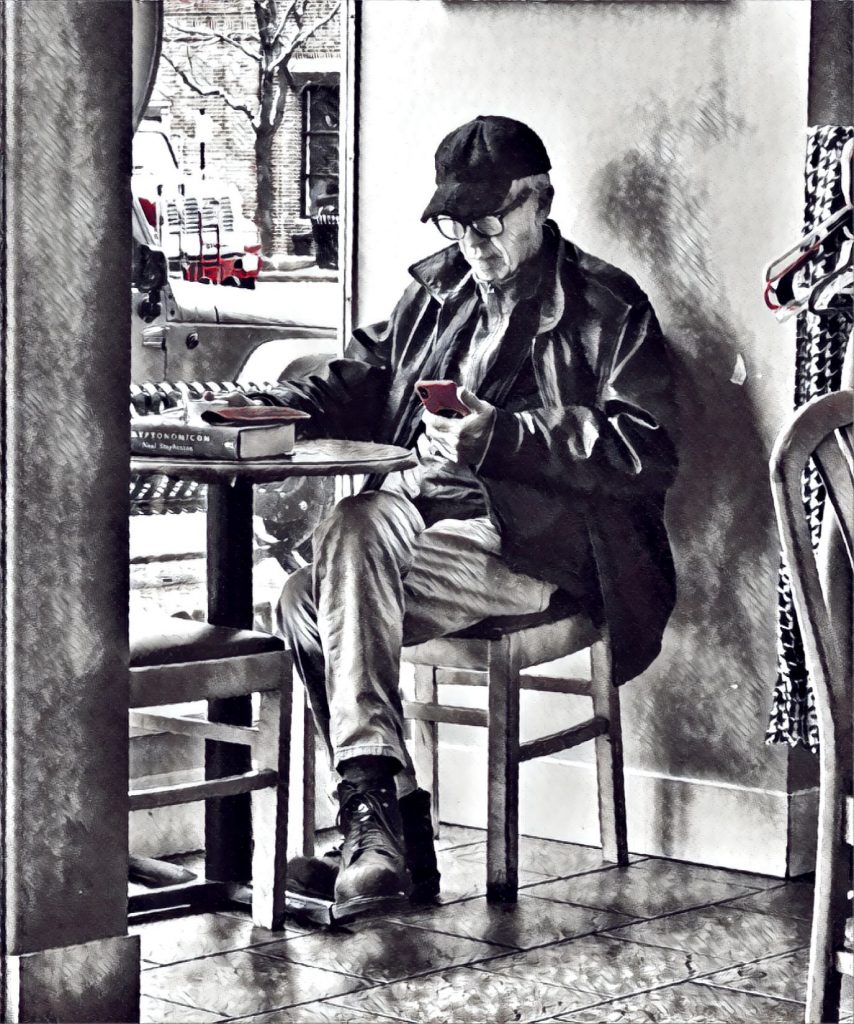 I tend to be a little preachy on the subject of people becoming addicted to their “devices.” I’m keeping this photo (and this one) to remind me to stop that shit. There I sit, with a really good book in front of me, zombied out in my phone.
I tend to be a little preachy on the subject of people becoming addicted to their “devices.” I’m keeping this photo (and this one) to remind me to stop that shit. There I sit, with a really good book in front of me, zombied out in my phone.